The Role of ALD-ZnO Seed Layers in the Growth of ZnO Nanorods for Hydrogen Sensing
Abstract
1. Introduction
2. Experimental Details
3. Results and Discussion
4. Conclusions
Author Contributions
Acknowledgments
Conflicts of Interest
References
- McAleer, J.F.; Mosely, P.T.; Norris, J.O.; Williams, D.E. Tin dioxide gas sensors. Part 1—Aspects of the surface chemistry revealed by electrical conductance variations. J. Chem. Soc. Faraday Trans. 1 1987, 83, 1323–1346. [Google Scholar] [CrossRef]
- Neri, G. First fifty years of chemoresistive gas sensors. Chemosensors 2015, 3, 1–20. [Google Scholar] [CrossRef]
- Schultealbert, C.; Baur, T. A novel approach towards calibrated measurement of trace gases using metal oxide semiconductor sensors. Sens. Actuators B 2017, 239, 390–396. [Google Scholar] [CrossRef]
- Lee, J.M.; Park, J.E.; Kim, S.; Kim, S.; Lee, E.; Kim, S.J.; Lee, W. Ultra-sensitive hydrogen gas sensors based on Pd-decorated tin dioxide nanostructures Room temperature operating sensors. Int. J. Hydrogen Energy 2010, 35, 12568–12573. [Google Scholar] [CrossRef]
- Hazra, S.K.; Basu, S. High sensitivity and fast response hydrogen sensors based on electrochemically etched porous titania thin films. Sens. Actuators B Chem. 2006, 115, 403–411. [Google Scholar] [CrossRef]
- Sekimoto, S.; Nakagawa, H.; Okazaki, S.; Fukuda, K.; Asakura, S.; Shigemori, T.; Takahashi, S.A. A fiber-optic evanescent-wave hydrogen gas sensor using palladium-supported tungsten oxide sensor. Sens. Actuators B Chem. 2000, 66, 142–145. [Google Scholar] [CrossRef]
- Okazaki, S.; Nakagawa, H.; Asakura, S.; Tomiuchi, Y.; Tsuji, N.; Murayama, H.; Washiya, M. Sensing characteristics of an optical fiber sensor for hydrogen leak sensor. Sens. Actuators B Chem. 2003, 93, 142–147. [Google Scholar] [CrossRef]
- Wang, H.T.; Kang, B.S.; Ren, F.; Tien, L.C.; Sadik, P.W.; Norton, D.P.; Pearton, S.J. Detection of hydrogen at room temperature with catalyst-coated multiple ZnO nanorods. Appl. Phys. A 2005, 81, 1117–1119. [Google Scholar] [CrossRef]
- Das, S.; Jayaraman, V. SnO2: A comprehensive review on structures and gas sensors. Prog. Mater. Sci. 2014, 66, 112–255. [Google Scholar] [CrossRef]
- Yamazoe, N.; Sakai, G.; Shimanoe, K. Oxide semiconductor gas sensors. Catal. Surv. Asia 2003, 7, 63–75. [Google Scholar] [CrossRef]
- Shukla, S.; Ludwig, L.; Parrish, C.; Seal, S. Inverse-catalyst-effect observed for nanocrystalline-doped tin oxide sensor at lower operating temperature. Sens. Actuators B Chem. 2005, 104, 223–231. [Google Scholar] [CrossRef]
- Basu, S.; Dutta, A. Room-temperature hydrogen sensors based on ZnO. Mater. Chem. Phys. 1997, 47, 93–96. [Google Scholar] [CrossRef]
- Phanichphant, S. Semiconductor Metal Oxides as Hydrogen Gas Sensors. Procedia Eng. 2014, 87, 795–802. [Google Scholar] [CrossRef]
- Fang, M.; Liu, Z. Controllable size and photoluminescence of ZnO nanorod arrays on Si substrate prepared by microwave-assisted hydrothermal method. Ceram. Int. 2017, 43, 6955–6962. [Google Scholar] [CrossRef]
- Hu, X.-L.; Zhu, Y.-J.; Wang, S.-W. Sonochemical and microwave-assisted synthesis of linked single-crystalline ZnO rods. Mater. Chem. Phys. 2004, 88, 421–426. [Google Scholar] [CrossRef]
- Qurashi, A.; Fiaz, M.; Tabet, N.; Yamazaki, T. Ultra-fast microwave synthesis of ZnO nanowires and their dynamic response to hydrogen gas. Nanoscale Res. Lett. 2009, 4, 948–954. [Google Scholar] [CrossRef] [PubMed]
- Jiang, Y.; Wu, M.; Wu, X.; Sun, Y.; Yin, H. Low-temperature hydrothermal synthesis of flower-like ZnO microstructure and nanorod array on nanoporous TiO2 film. Mater. Lett. 2009, 63, 275–278. [Google Scholar] [CrossRef]
- Miao, Y.; Zhang, H.; Yuan, S.; Jiao, Z.; Zhu, X. Preparation of flower-like ZnO architectures assembled with nanosheets for enhanced photocatalytic activity. J. Colloid Interface Sci. 2016, 462, 9–18. [Google Scholar] [CrossRef] [PubMed]
- Zhou, Y.; Liu, C.; Zhong, X.; Wu, H.; Li, M.; Wang, L. Simple hydrothermal preparation of new type of sea urchin-like hierarchical ZnO micro/nanostructures and their formation mechanism. Ceram. Int. 2014, 40, 10415–10421. [Google Scholar] [CrossRef]
- Yang, J.; Jia, H.; Lu, X.; Wang, Y. High-response and selective hydrogen sensing properties of porous ZnO nanotubes. Ceram. Int. 2016, 42, 12409–12413. [Google Scholar] [CrossRef]
- Zang, Z.; Wen, M.; Chen, W.; Tang, X. Strong yellow emission of ZnO hollow nanospheres fabricated using polystyrene spheres as templates. Mater. Des. 2015, 84, 418–421. [Google Scholar] [CrossRef]
- Lim, J.; Lee, C. Atomic layer deposition of ZnO: A review. Thin Solid Films 2007, 515, 3335–3338. [Google Scholar] [CrossRef]
- Djurišić, A.B.; Leung, Y.H. Optical properties of ZnO nanostructures. Small 2006, 2, 944–961. [Google Scholar] [CrossRef] [PubMed]
- Djurišić, A.B.; Leung, Y.H.; Tam, K.H.; Hsu, Y.F.; Ding, L.; Ge, W.K.; Zhong, Y.C.; Wong, K.S.; Chan, W.K.; Tam, H.L. Defect emissions in ZnO nanostructures. Nanotechnology 2007, 18, 095702. [Google Scholar] [CrossRef]
- Hsieh, P.T.; Chen, Y.C.; Wang, C.M.; Tsai, Y.Z.; Hu, C.C. Structural and photoluminescence characteristics of ZnO films by room temperature sputtering and rapid thermal annealing process. Appl. Phys. A 2006, 84, 345–349. [Google Scholar] [CrossRef]
- Chandrinou, C.; Boukos, N.; Stogios, C.; Travlos, A. PL study of oxygen defect formation in ZnO nanorods. Microelectron. J. 2009, 40, 296–298. [Google Scholar] [CrossRef]
- Hou, X.; Liu, H.; Sun, H.; Liu, L.; Jia, X. Significant room-temperature ferromagnetism in porous ZnO films: The role of oxygen vacancies. Mater. Sci. Eng. B 2015, 200, 22–27. [Google Scholar] [CrossRef]
- Janotti, A.; Van de Walle, C.G. Oxygen vacancies in ZnO. Appl. Phys. Lett. 2005, 87, 122102. [Google Scholar] [CrossRef]
- Available online: https://en.wikipedia.org/wiki/Sheet_resistance (accessed on 23 July 2019).
- Huang, J.; Wan, Q. Gas sensors based on semiconducting metal oxide one-dimentional nanostructures. Sensors 2009, 9, 9903–9924. [Google Scholar] [CrossRef]
- Wetchakun, K.; Samerjai, T.; Tamaekong, N.; Liewhiran, C.; Siriwong, C.; Kruefu, V.; Tuantranont, A.; Phanichphant, S.; Wisitsoraat, A. Semiconducting metal oxides as sensors for environmentally hazardous gases. Sens. Actuators B 2011, 160, 580–591. [Google Scholar] [CrossRef]
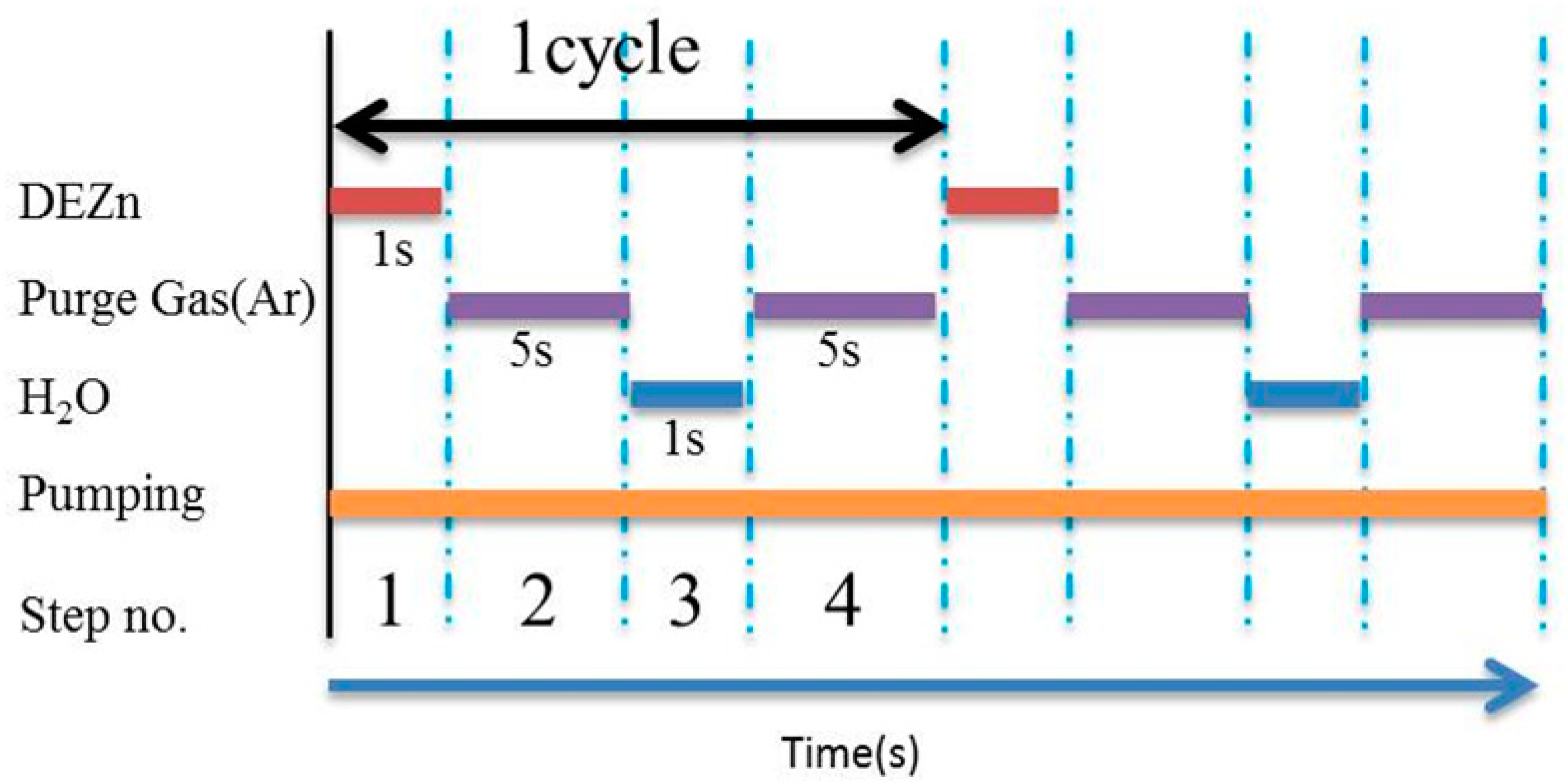
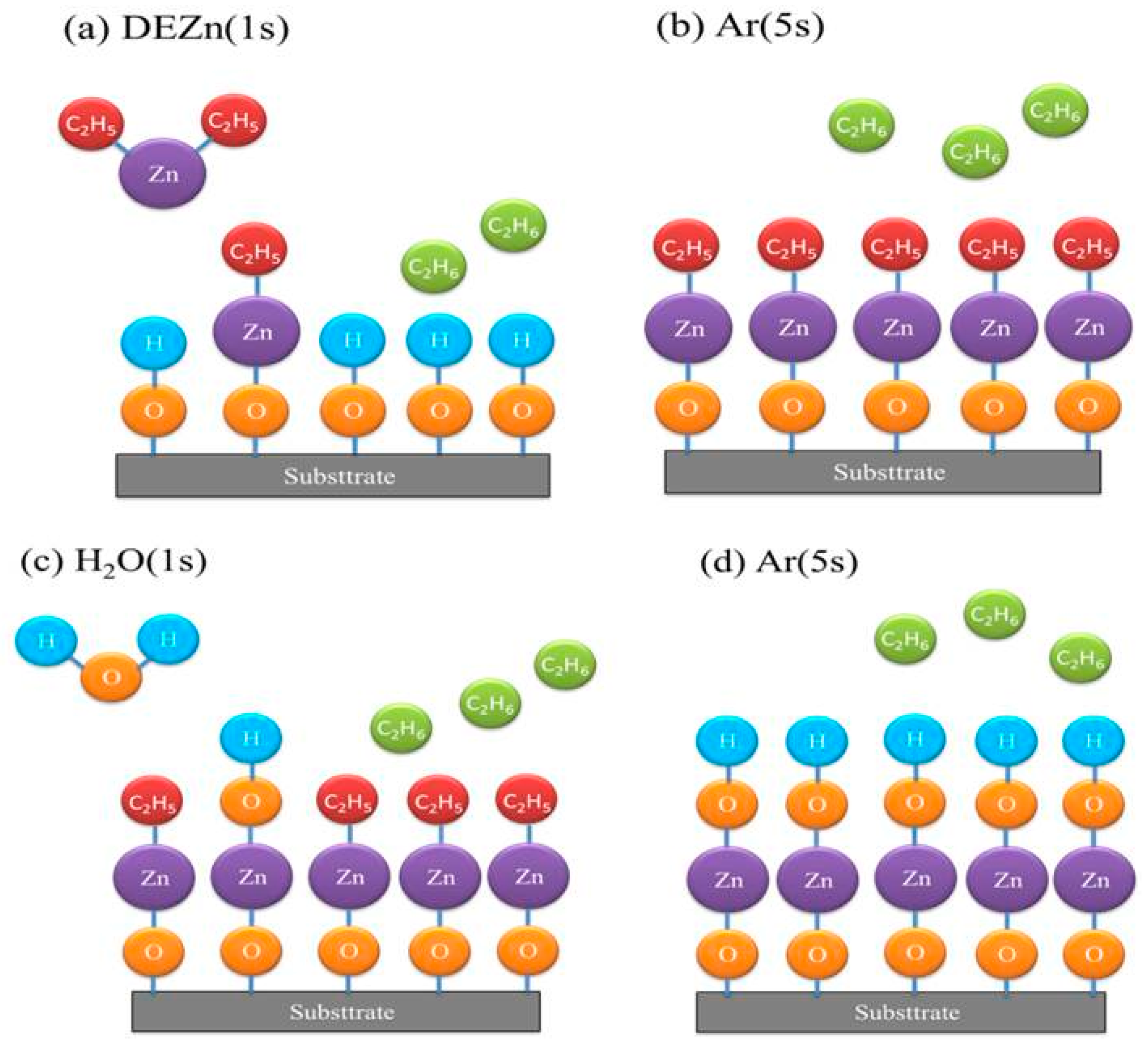
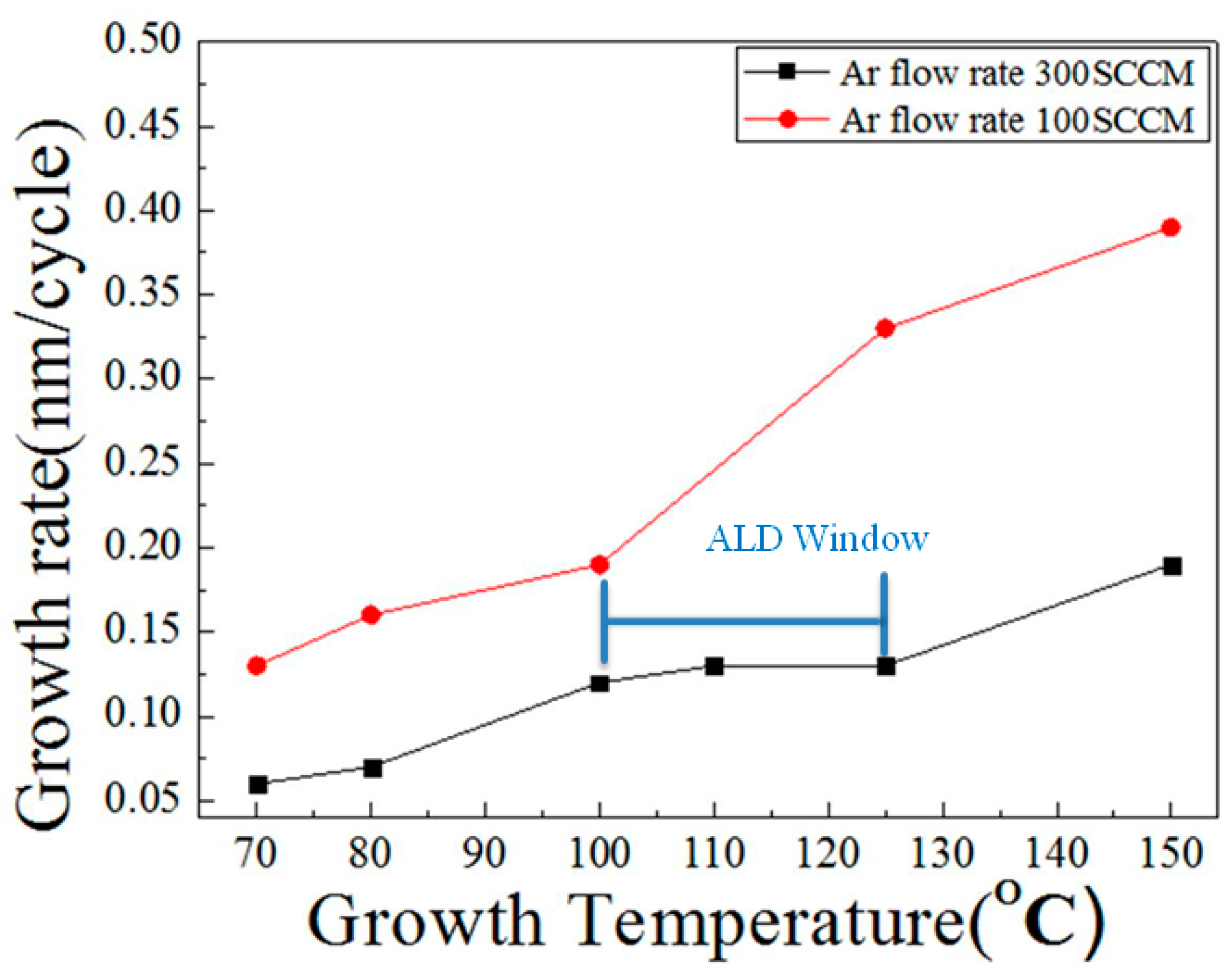

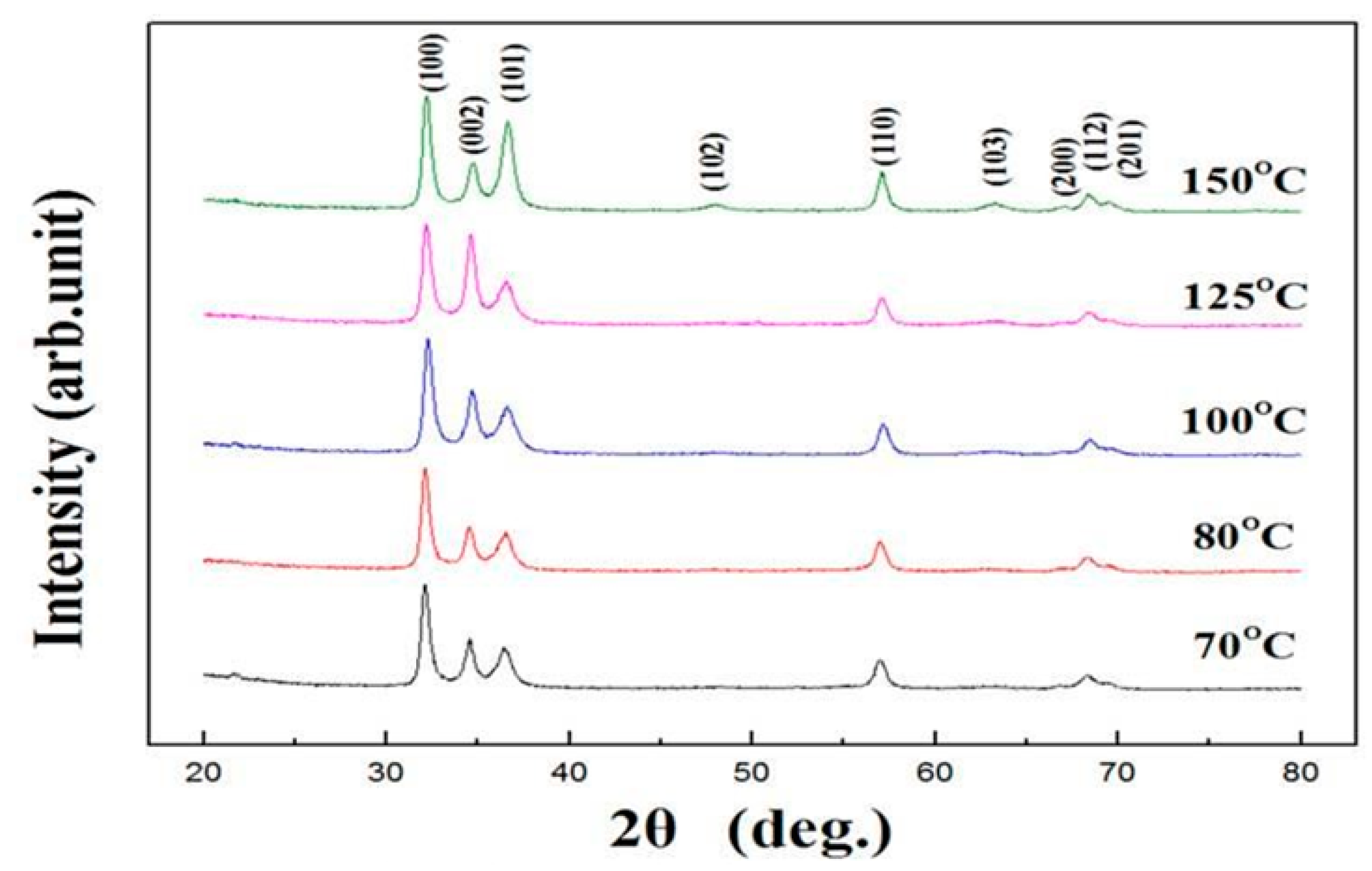
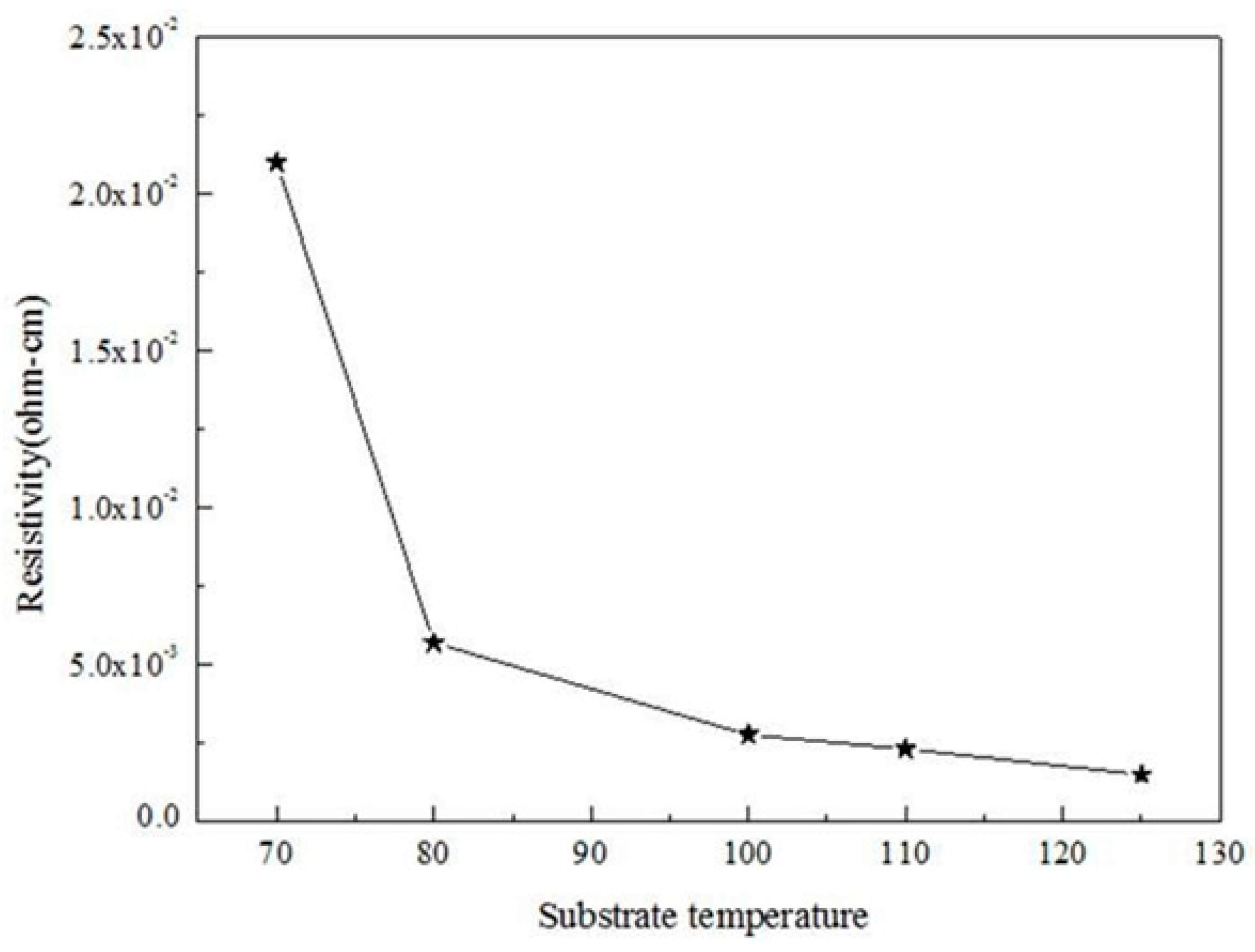
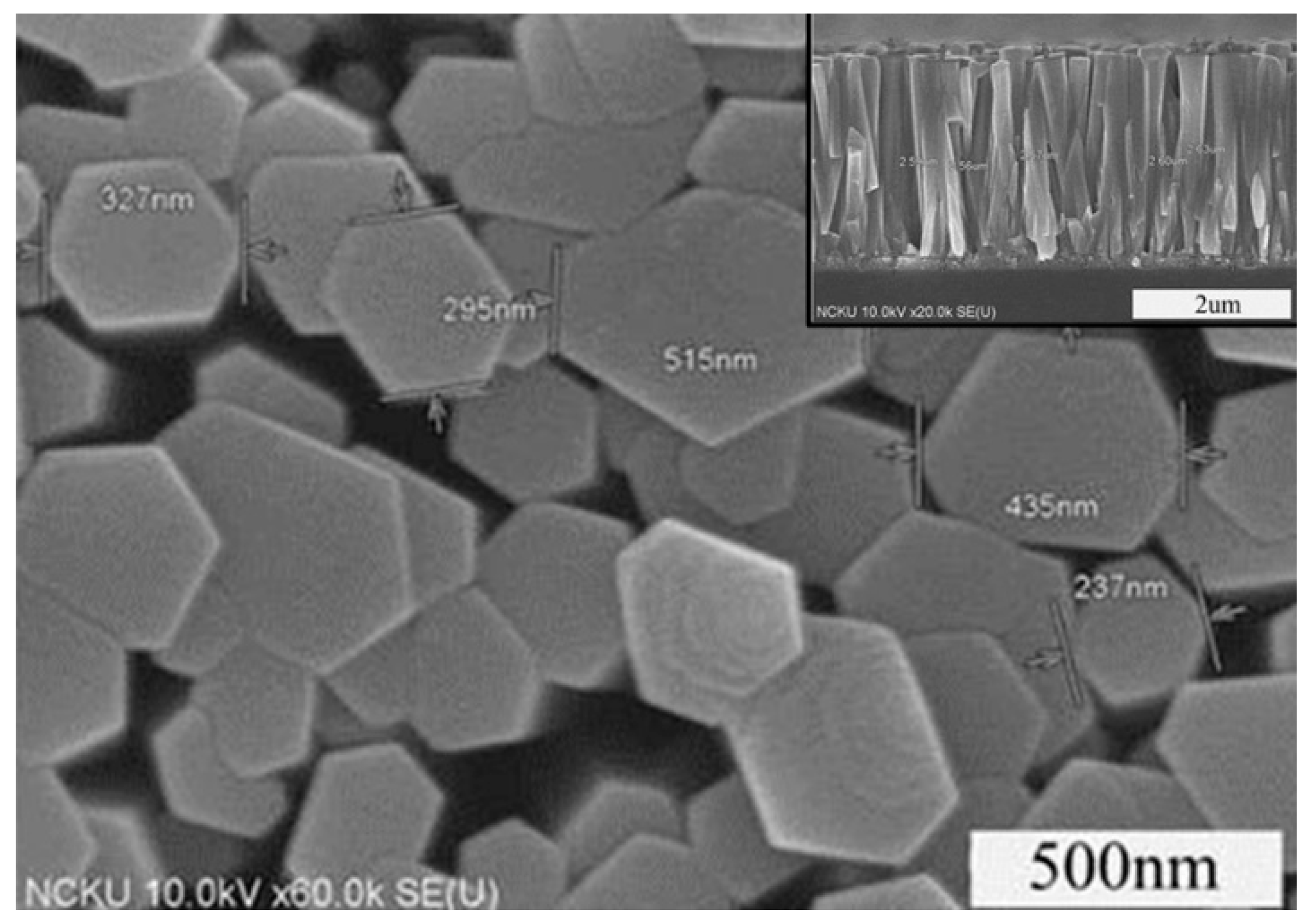
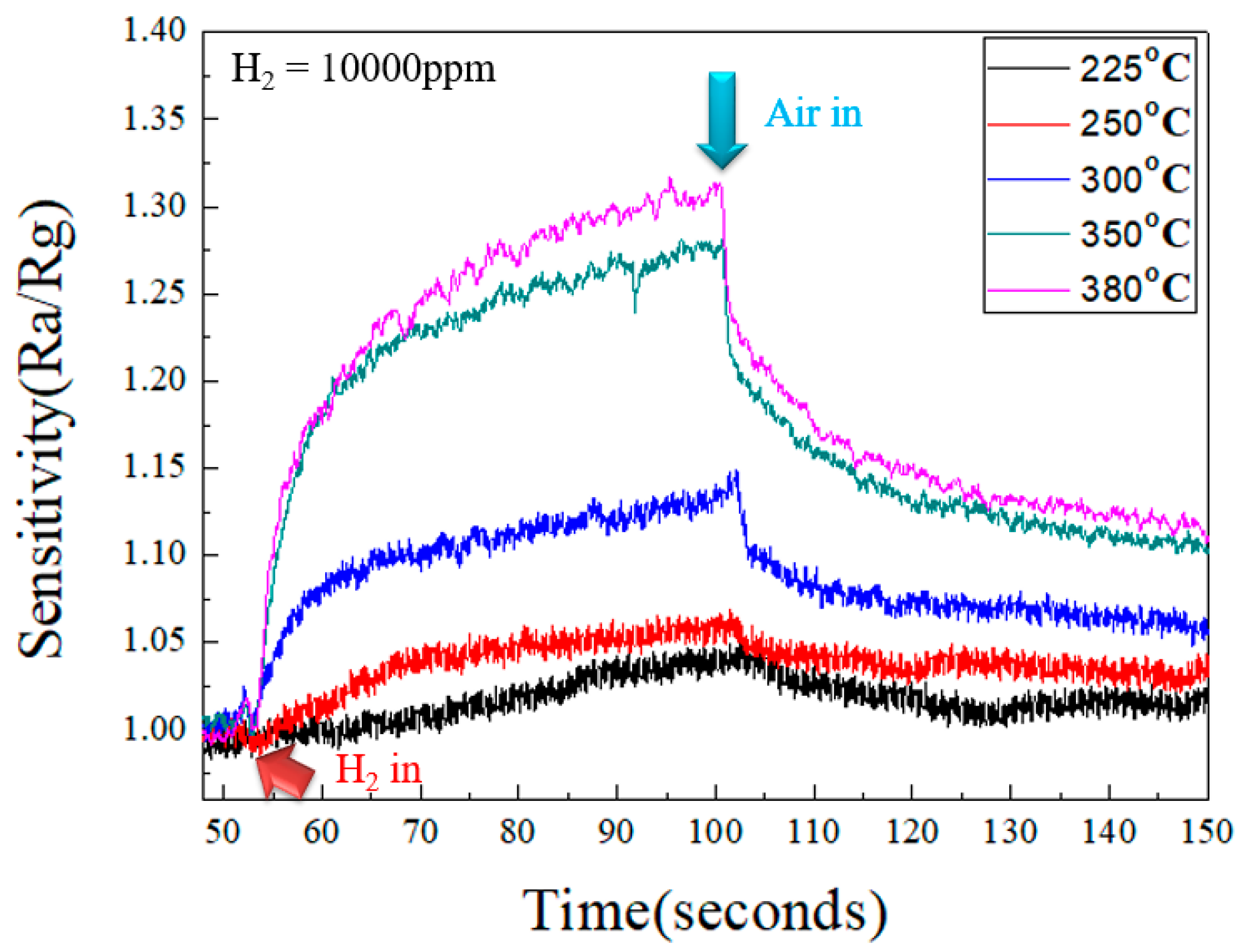

© 2019 by the authors. Licensee MDPI, Basel, Switzerland. This article is an open access article distributed under the terms and conditions of the Creative Commons Attribution (CC BY) license (http://creativecommons.org/licenses/by/4.0/).
Share and Cite
Lu, Y.; Hsieh, C.; Su, G. The Role of ALD-ZnO Seed Layers in the Growth of ZnO Nanorods for Hydrogen Sensing. Micromachines 2019, 10, 491. https://doi.org/10.3390/mi10070491
Lu Y, Hsieh C, Su G. The Role of ALD-ZnO Seed Layers in the Growth of ZnO Nanorods for Hydrogen Sensing. Micromachines. 2019; 10(7):491. https://doi.org/10.3390/mi10070491
Chicago/Turabian StyleLu, Yangming, Chiafen Hsieh, and Guanci Su. 2019. "The Role of ALD-ZnO Seed Layers in the Growth of ZnO Nanorods for Hydrogen Sensing" Micromachines 10, no. 7: 491. https://doi.org/10.3390/mi10070491
APA StyleLu, Y., Hsieh, C., & Su, G. (2019). The Role of ALD-ZnO Seed Layers in the Growth of ZnO Nanorods for Hydrogen Sensing. Micromachines, 10(7), 491. https://doi.org/10.3390/mi10070491




